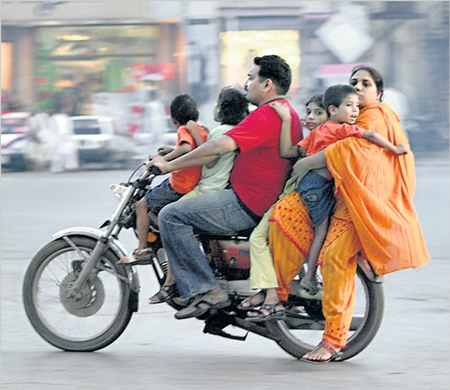Unsafe Cars Can Save Lives
Jalopnik: If seeing that a vehicle has a zero-star safety rating isn’t enough to frighten a person out of his or her mind, seeing said vehicle in a wreck probably is. Five cars designed for India—which has minimal safety requirements for vehicles—just received that number in crash testing…
The tests come from the London-based Global New Car Assessment Program…The group tested seven cars made for the Indian market and handed five of them—the Renault Kwid, Maruti Suzuki Celerio, Maruti Suzuki Eeco, Mahindra Scorpio, and Hyundai Eon, all with no airbags—a rating of zero out of five stars for adult safety…
David Ward, secretary general of Global NCAP told the Wall Street Journal:
Global NCAP strongly believes that no manufacturer anywhere in the world should be developing new models that are so clearly sub-standard,” he said. “Car makers must ensure that their new models pass the UN’s minimum crash test regulations, and support use of an airbag.
 Let’s take a closer look. These cars are very inexpensive. A Renault Kwid, for example, can be had for under $4000. In the Indian market these cars are competing against motorcycles. Only 6 percent of Indian households own a car but 47% own a motorcycle. Overall, there are more than five times as many motorcycles as cars in India.
Let’s take a closer look. These cars are very inexpensive. A Renault Kwid, for example, can be had for under $4000. In the Indian market these cars are competing against motorcycles. Only 6 percent of Indian households own a car but 47% own a motorcycle. Overall, there are more than five times as many motorcycles as cars in India.
Motorcycles are also much more dangerous than cars.
The [U.S] federal government estimates that per mile traveled in 2013, the number of deaths on motorcycles was over 26 times the number in cars.
Similar ratios are found in the UK and Australia. I can think of several reasons why the ratio might be lower in India–lower speeds, for example, but also several reasons why the ratio might be higher (see picture above).
The GNCAP worries that some Indian cars don’t have airbags but forgets that no Indian motorcycles have airbags. Even a zero-star car is much safer than a motorcycle. Air bags cost about $200-$400 (somewhat older estimates here a, b, c) and are not terribly effective. (Levitt and Porter, for example, calculated that air bags saved 550 lives in 1997 compared to 15,000 lives saved by seatbelts.) At $250, airbags would increase the cost of a $5,000 car by 5%. A higher price for automobiles would reduce the number of relatively safe automobiles and increase the number of relatively dangerous motorcycles and thus an air bag requirement could result in more traffic fatalities.
A broader point is that in India today $250 is about 5% of GDP per capita ($5,700 at PPP) and that’s a high price to pay for the limited protection provided by an air bag. Lots of people in the United States wouldn’t pay $2750–5% of US GDP per capita–for an air bag. Why should Indians be any different? (Mannering and Whinston estimated U.S. willingness to pay was about $500 in the 1990s). As incomes in India rise more people will demand cars and they will demand better and safer cars but forcing people to buy an option before they are willing to pay for it is unlikely to make people better off.
Safety is relative so cars judged unsafe by global standards could save lives in India. The bigger lesson is that it’s always dangerous to impose global standards without taking into account the differing circumstances of time and place.